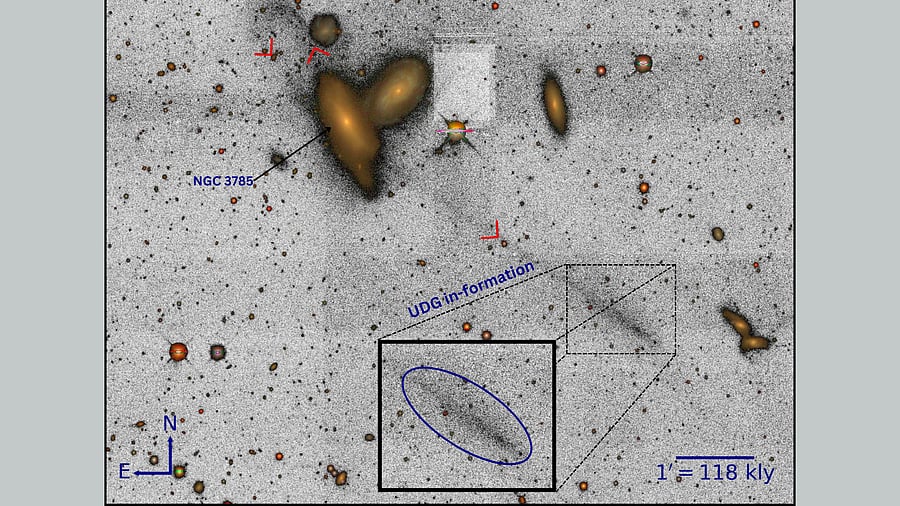
A satellite image of NGC 3785 and its neighbouring galaxy with the ultra-diffuse galaxy in formation at the tail.
PHOTO: Indian Institute of Astrophysics, Bengaluru
Bengaluru: Astronomers have discovered a new ultra-diffuse galaxy under formation at the end of the tidal tail of galaxy NGC 3785, located approximately 430 million light years from Earth in the Leo constellation.
The discovery was made by a collaborative team of researchers from the Indian Institute of Astrophysics (IIA) in Bengaluru, Pondicherry University, the SKA Observatory in the United Kingdom, and the National Centre for Radio Astronomy (NCRA) in Pune.
The formation of this new galaxy is the result of gravitational interaction between NGC 3785 and a neighbouring galaxy. Ultra-diffuse galaxies are less bright and less massive than typical galaxies like the Milky Way.
Chandan Watts, the first author of the paper, explained that there are two main types of gravitational interactions between galaxies.
"The first is a merger, where two galaxies collide and merge, and the second is a flyby, where galaxies pass close to one another, causing matter to be pulled away from one galaxy," he said.
The tidal tail of NGC 3785 is formed from this flyby interaction.
When astronomers from IIA and their collaborators observed NGC 3785, they discovered that it not only has the longest tidal tail ever observed, but also that an ultra-diffuse galaxy is currently being formed at the tail’s end.
Omkar Bait, a co-author of the study, first noticed the unusually long tidal tail several years ago while working as a student at NCRA in Pune.
“We decided to examine this extraordinary galaxy and its massive tidal tail in detail,” Watts told DH. “We found that the tidal tail stretches for 1.27 million light years, making it the longest tidal tail ever discovered in an isolated environment.”
He said investigating the ultra-diffuse galaxy in formation can help further our understanding about the processes behind the formation of such objects and galaxy evolution.